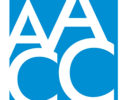Report roundup
By AACC 21st Century Center Staff
July 28, 2022
Here are three reports to know about this month:
Better serving Latino students beyond completion
Excelencia in Education’s new report highlights how seven higher education institutions — three community colleges among them — are developing efforts to ensure their students succeed after completion, whether in further education, careers or civic life.
Among the seven colleges and universities — which include Austin Community College in Texas, Long Beach City College in California and Wilbur Wright College in Illinois — Excelencia identified three common strengths they shared to advance post-completion success efforts with the intention to serve Latino completers: Offering culturally relevant institutional practices designed to accelerate Latino post-completion success; providing custom measures and metrics to track post-completion success outcomes; and showing progress in closing post-completion success equity gaps for Latino completers.
The report also lays out a plan for colleges that want to pursue developing a strategy to better serve Latino completers. Read the report.
Ransomware attacks increase
According to a new report from Sophos, 64% of higher education organizations and 56% of lower education organizations and were hit by ransomware in the last year. This is a big increase from the 44% of education respondents that reported an attack in Sophos’ 2021 survey (based on 499 respondents across lower and higher education).
While education has a below-average attack rate, “the adversaries’ encryption success rate in this sector is considerably higher than average,” the report says. In fact, higher education has the highest data encryption rate of all sectors surveyed (74% of attacks resulted in data being encrypted).
The challenging cyber insurance market is driving education organizations to improve their cyber defenses: 68% of higher education organizations have implemented new technologies/services to improve their insurance position.
Higher ed job satisfaction
New research from the College and University Professional Association for Human Resources (CUPA-HR) found that nearly two-thirds (62%) of higher ed employees are satisfied with their job. More than one-fifth (22%) of employees, however, are not satisfied with their jobs. When comparing these results by types of institutions, higher ed employees in baccalaureate institutions perceive their work environment most favorably, whereas those in associate institutions perceive their work environment least favorably.
More than half (57%) of the higher ed workforce is at least somewhat likely to look for other employment opportunities in the next 12 months, the report says. The most common reason for seeking something else (provided by three-fourths of those likely to look for another job) is an increase in pay. CUPA-HR analyzed data from 3,815 higher ed employees at 949 institutions (including 183 public, associate-degree-granting institutions) and across 15 departments/functional areas.



